One Of These Four Missions Will Be Selected As NASA’s Next Flagship For Astrophysics

In order to reap the greatest rewards, we have to think big and invest big. One of these four missions will deliver like never before.
When it comes to exploring the Universe and understanding what it’s made of, how it came to be, and what its ultimate fate is, no observatory has taught us more than the Hubble Space Telescope. It was the first flagship mission for NASA Astrophysics, the most revolutionary class of missions that NASA invests in of any type. What we’ve gained, both scientifically and in terms of human perspective, is immeasurable.
At the same time that the President’s budget threatens to terminate an upcoming flagship mission, the final selection for NASA Astrophysics’ flagship mission of the 2030s is imminent. Over the next few months, the four proposals will be ranked according to the recommendations of the National Resource Council. Any one of the four would be a worthy choice, but they all deserve a chance to fly. Here’s what the possibility means to all of us.
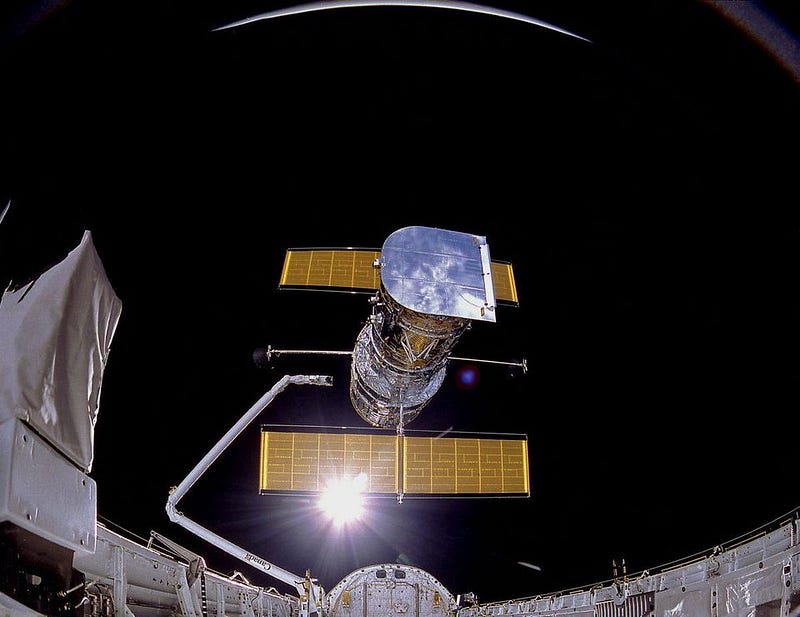
Although we don’t really think of it that way, the Hubble Space Telescope was extremely controversial at the outset. Although it’s rarely discussed, the plans to build and launch Hubble as the world’s first major astronomical observatory in space were met with much resistance, as it would be the most expensive science mission ever put together to date.
In terms of initial cost, Hubble was the single most expensive mission in the history of astrophysics, costing $5 billion before it was ever successfully deployed. Over its lifetime, including continued operations, maintenance, and four servicing missions, it’s cost humanity between $15-$20 billion. Yet when we look back, 29 years later, at what Hubble has revealed to us, what we know is so different from what we ever anticipated.
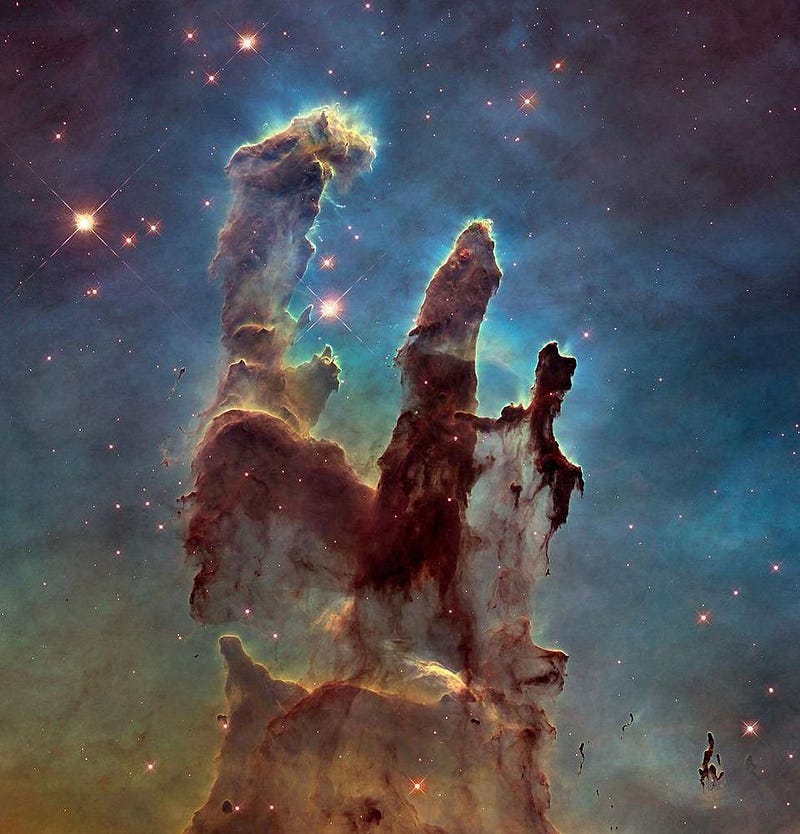
Originally designed with the primary purpose of measuring the expansion rate of the Universe — the Hubble constant, hence the name — its greatest discoveries were entirely unexpected. As a direct result of Hubble, we not only successfully measured the expanding Universe to better precision than ever before, we:
- discovered the earliest, most distant galaxies ever seen,
- learned how galaxies evolved and grew up,
- found four new moons of Pluto,
- took the first direct image of a planet outside of our own Solar System,
- and even measured how much time has passed since the hot Big Bang.
That’s just a tiny sample of the thousands of discoveries that Hubble has brought to our world. More scientific papers have been published using Hubble’s data than from any scientific instrument in history.
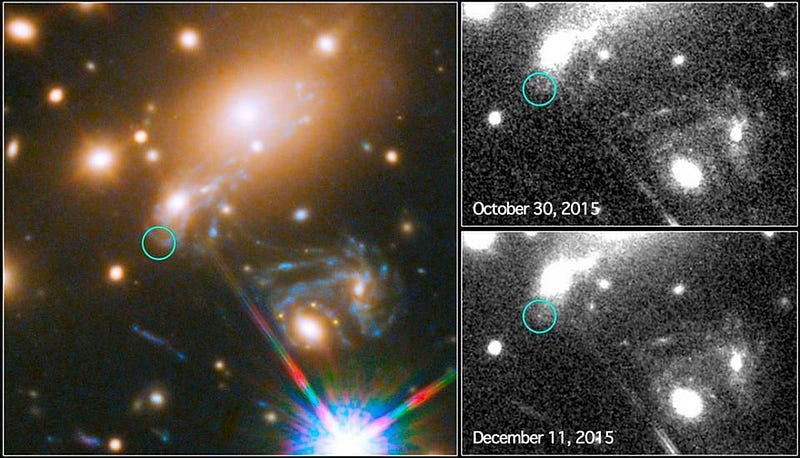
The science gains from a flagship mission in Astrophysics — what Thomas Zurbuchen of NASA calls “civilization-class science” — are unparalleled. By building a powerful observatory that’s optimized to measure the Universe with a better combination of resolution and light-gathering power across a particular set of wavelengths, it can accomplish scientific goals that no other mission can. By also building in a suite of state-of-the-art instruments, it becomes extraordinarily versatile and adaptable, able to measure aspects of the Universe and objects within it that we don’t even know about at the time of its launch.
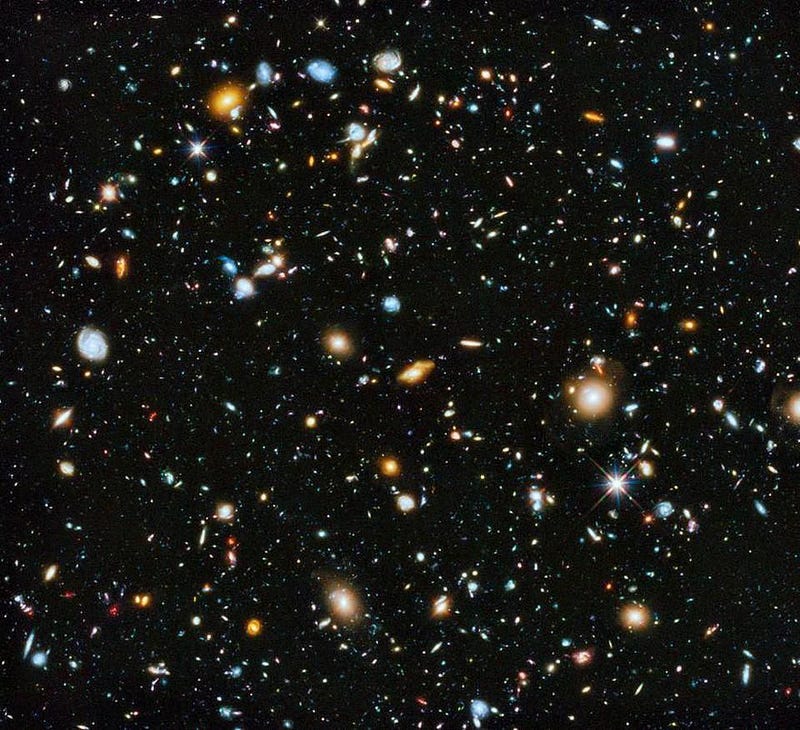
It’s hard to imagine a grander goal for humanity than understanding the greatest mysteries of our Universe, and learning what the implications are for us and our place within it. Yet that is what these flagship missions — and only our flagship missions — can do. If I had to summarize our three most important (and, not coincidentally, most expensive) flagship astrophysics missions, it would be as follows:
- Hubble, our flagship of the 1990s, showed us what our Universe looks like.
- For the 2000s, we launched a suite of moderate-budget observatories across a variety of wavelengths, including Spitzer (in the infrared) and Chandra (in the X-ray).
- James Webb, the flagship of the 2010s, will teach us how our Universe grew up, and what the very first stars and galaxies were like.
- WFIRST, the flagship for the 2020s, will reveal to us our Universe’s ultimate fate, and explore Earth-like worlds beyond our Solar System as never before.
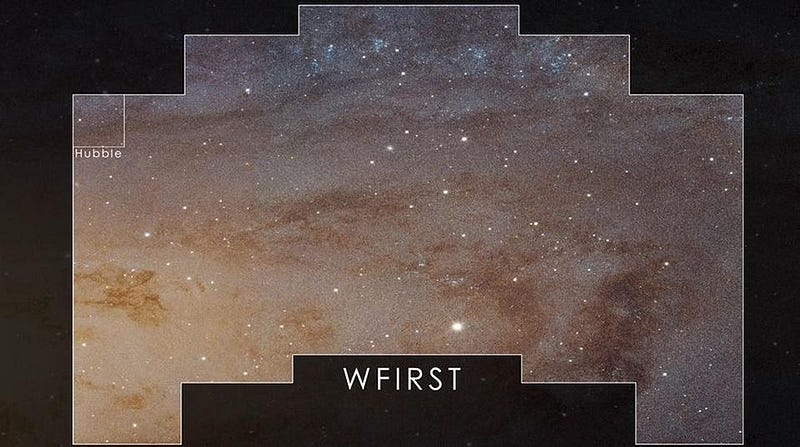
In just a few months, the National Resource Council, a branch of the National Academies of Science, will select which grand plan we’ll shoot for, as a civilization, for astronomy in the 2030s. To uncover the answers to the greatest open questions about our Universe today, we need to build observatories that are up to the technological challenges that pushing past the current frontiers in astronomy demands.
The cutting-edge teams who’ve submitted proposals have banded together to identify four huge ways that we can expand our knowledge of the Universe in a profound way. They cover the following four fields:
- exoplanet science (the HabEx mission),
- X-ray astronomy (the Lynx mission),
- infrared astronomy (the OST mission),
- and optical astronomy (the LUVOIR mission).
All four of these proposed missions are the result of dreaming big, and each one will showcase what astronomy missions, if we truly invest in them, are capable of teaching us.
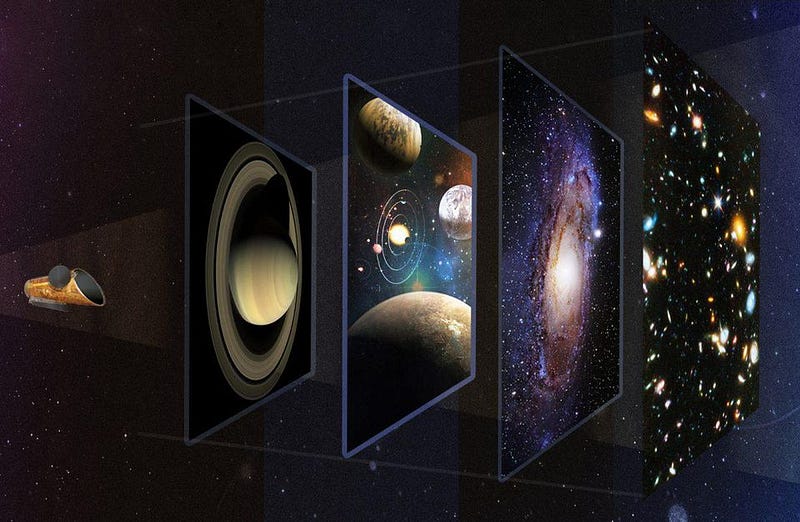
The Habitable Exoplanets Observatory (HabEx). The ultimate goal of HabEx is simple: to directly image Earth-like planets around other Sun-like stars. While other observatories will detect such worlds indirectly, or image larger planets farther away from smaller stars, HabEx plans to fill that ultimate of niches: imaging a world like our own around a star like our own. A space-based optical telescope with a 4-meter diameter, combined with a starshade, will enable this great leap forward for astronomy.
Its instruments will enable us to characterize the atmospheres of Earth-like and non-Earth-like worlds, seeking signs of water, oxygen, ozone, and other molecules that may be true signatures of life on that world. It will also be of good use as a general astronomical observatory, similar to an upgraded version of what Hubble is today.
The biggest downside for HabEx is that it’s inferior in nearly every way to LUVOIR, while only representing a marginal upgrade over WFIRST for general astronomy.
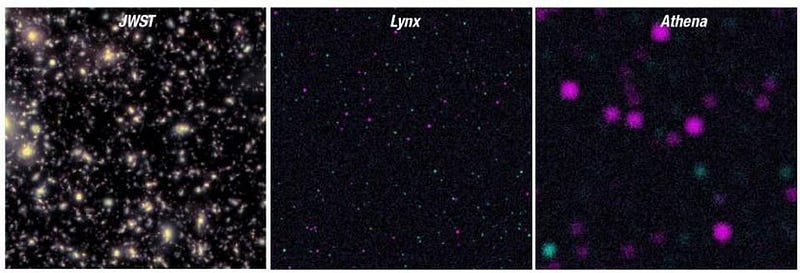
Lynx X-ray Observatory. Right now, our best windows on the high-energy Universe are observatories like NASA’s Chandra, which is already 20 years old today. In order to build a better X-ray observatory, you need to improve four different technologies:
- The optical assembly, which provides you with resolution, sensitivity, and field-of-view.
- A calorimeter, which allows you to determine the energy of each incoming X-ray over a particular energy range.
- A high-definition imager, which allows you to cover a large field-of-view with a high imaging frame rate, ideal for imaging rapidly changing or transient sources.
- And a grating spectrometer, which enables you to detect the signatures and locations of elements like carbon, iron, and oxygen at high resolutions.
While Chandra only has the same resolving power as an 8″ (0.20 meter) telescope, Lynx will really take a great leap beyond, with sensitivity that’s greater by a factor of 50-to-100, depending on the energy of the X-rays, and sixteen times the field of view.
The greatest strike against Lynx is the presence of the European Space Agency’s Athena, which will have a similar field-of-view but less sensitivity. Lynx, as proposed, will have 10 times the imaging resolution and better spectroscopic power for low-energy X-rays, crucial for identifying the astronomical signal of ionized oxygen.
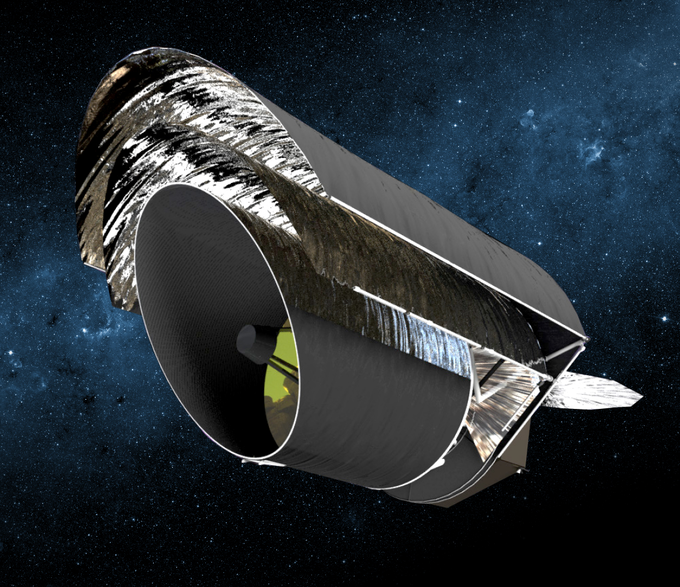
Origins Space Telescope (OST). While the James Webb Space Telescope will probe a portion of the infrared spectrum — the near-IR and the mid-IR — the only far-IR observatory ever launched by NASA was Spitzer, which is already 16 years out of date and operating beyond its safety capabilities.
Designed with a 5.9-meter primary mirror and with instruments operating at liquid helium (4 K) temperatures, it will reach sensitivities over 1,000 times greater than Herschel or SOFIA, which are the only observatories to cover the same wavelengths, spectroscopically, as OST. Equipped with 5 separate science instruments, it will investigate the growth of black holes and galaxies, the formation of planets and solar systems, the abundances and growth of heavy elements and dust in the Universe, and identify the ingredients of life throughout the cosmos.
Although there are no NASA or ESA counterparts truly competing with OST, its great drawback is its partial overlap with the James Webb Space Telescope (at short wavelengths) and the ground-based ALMA (at long wavelengths). But it will still explore a large wavelength range (from 30–300 microns) that no other mission, existing or even proposed, can match.
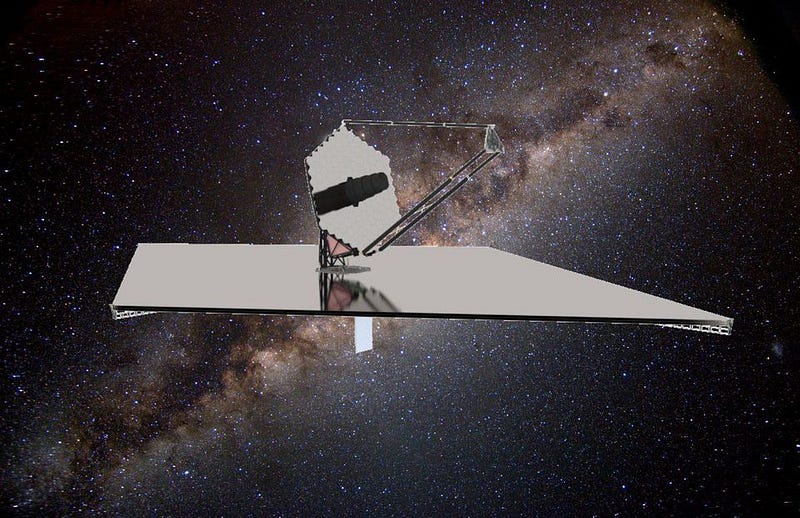
The Large Ultraviolet Optical and Infrared telescope (LUVOIR). This is the big dream: the ultimate successor to Hubble. It is proposed to have a diameter of a whopping 15 meters, giving it 40 times the light-gathering power of Hubble and unprecedentedly high resolution. If you were to put the Milky Way galaxy anywhere within the observable Universe, not only would LUVOIR see it, it would be able to resolve it into more than 100 pixels across no matter where it were located.
LUVOIR will be capable of performing such scientific tasks as:
- directly imaging geysers and volcanic eruptions on the moons of Jupiter and Saturn,
- directly imaging any Earth-like planets within about 100 light-years of Earth,
- measure individual stars in galaxies up to 300 million light-years away,
- characterizing the types of stars in every galaxy in the Universe, including billions that are too faint, small, or distant for Hubble to see,
- to map out the gas surrounding each and every galaxy, including both absorption and (hitherto elusive) emission features,
- and to measure the dark matter profiles, such as from rotation curves, of any galaxy at all.
In terms of ambition, LUVOIR outclasses all of these missions. But the final price tag is LUVOIR’s biggest drawback. Unless we convince the US government to increase its funding and commit somewhere around $20 billion to build this transformative observatory, we’ll have to settle for much less.
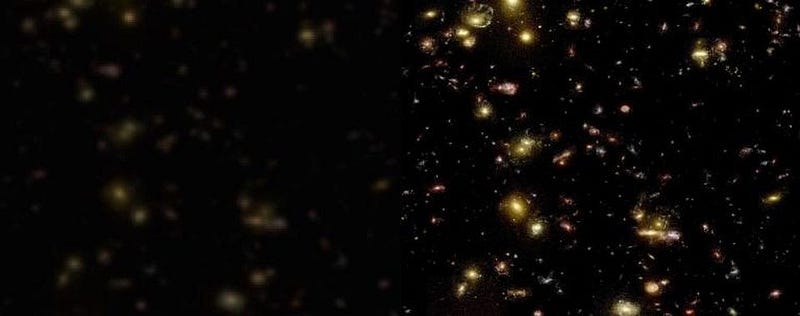
Choosing which of these missions to build and fly will, in many ways, inform our plans for the next 30 years (or more) of astronomy. NASA is the pre-eminent space agency in the world. This is where science, research, development, discovery, and innovation all come together. The spinoff technologies alone justify the investment, but that’s not why we do it. We are here to discover the Universe. We are here to learn all that we can about the cosmos and our place within it. We are here to find out what the Universe looks like and how it came to be the way it is today.
People will always argue over budgets — the penny-pinchers are always happy to propose something that’s faster, cheaper, and worse — but the reality is this: the budget for NASA Astrophysics as a whole is just $1.35 billion per year: less than 0.1% of the federal discretionary budget and less than 0.03% of the total federal budget. And still, for that tiny amount, NASA has steadily built a flagship program that’s the envy of the free world.
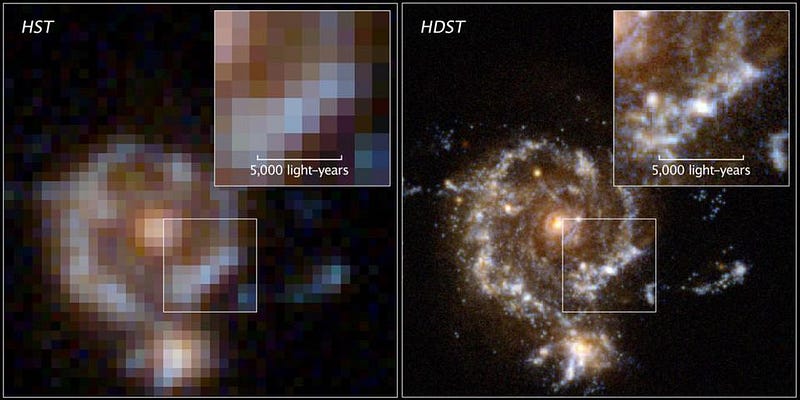
In an ideal society, we wouldn’t have to choose between these four diverse mission in exploring all there is that’s out there. We wouldn’t have to worry about being forced to settle for scaled-down versions of these missions. We would value discovery and exploration of the unknown — and peeling back the veil of our cosmic ignorance — more than we valued getting a limited amount of surefire science for the smallest possible investment. If we choose to make a greater investment, we could explore the Universe in ways we only dream of today.
But even if we don’t, there’s a revolutionary observatory on the horizon. One of these four candidates, a little over a decade from now, will show us the Universe beyond our presently-known frontiers. For any of them, the greatest discoveries may well be something we cannot even conceive of today; the way we make unexpected progress is by looking as we never have before. Whichever one comes to fruition, we will be explorers in uncharted territory. The Universe awaits our choice.
Ethan Siegel is the author of Beyond the Galaxy and Treknology. You can pre-order his third book, currently in development: the Encyclopaedia Cosmologica.





